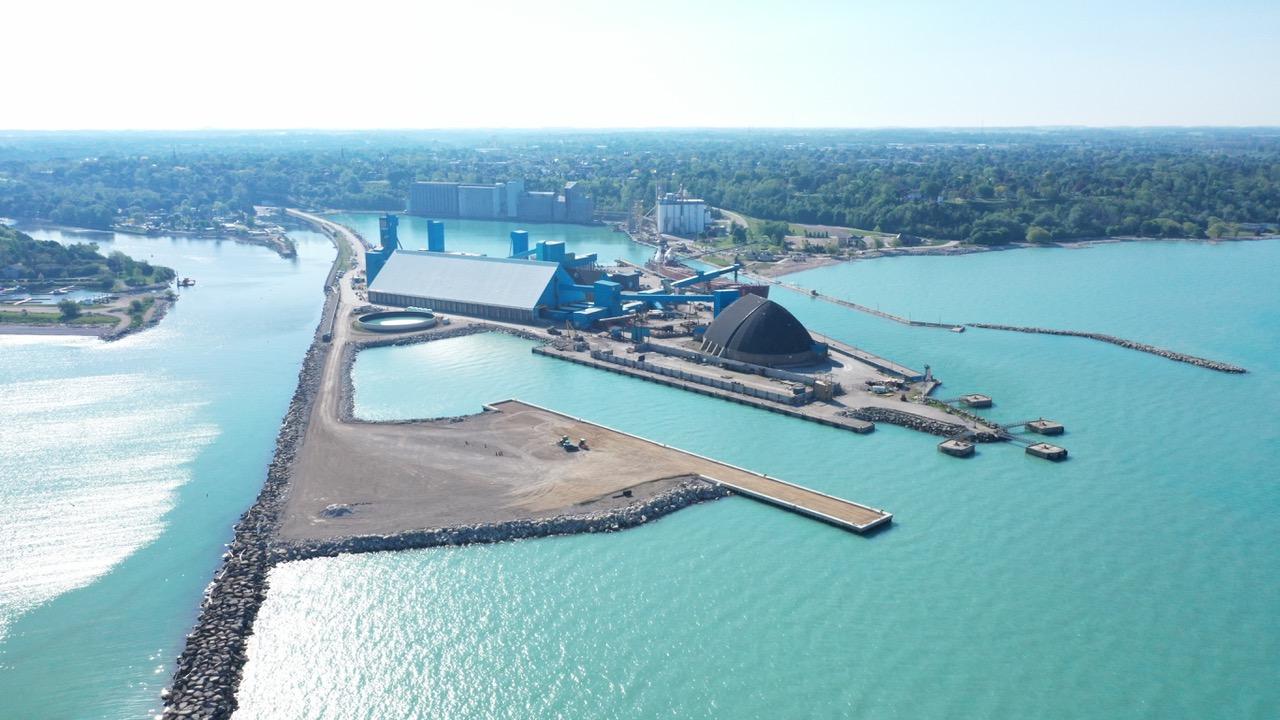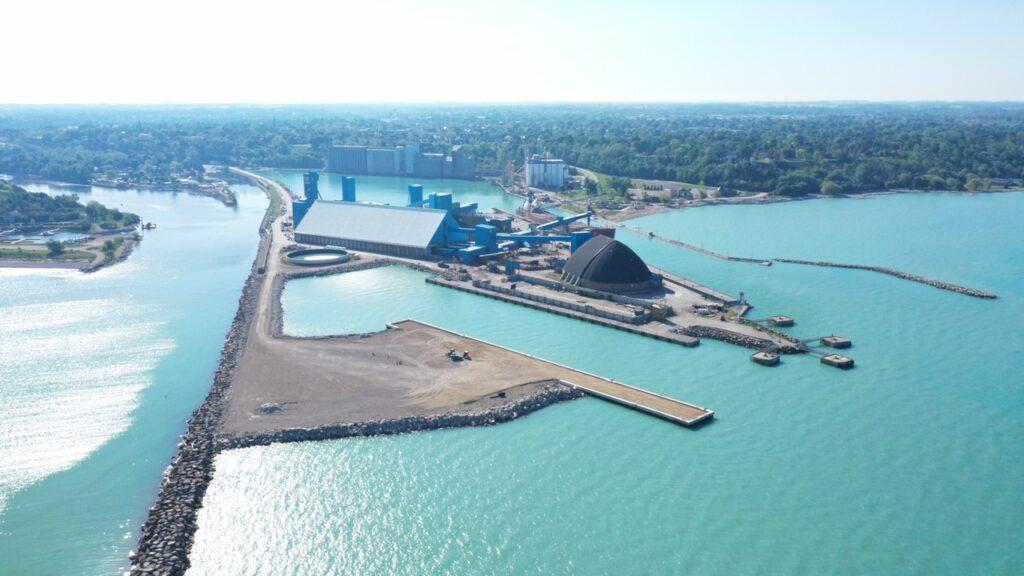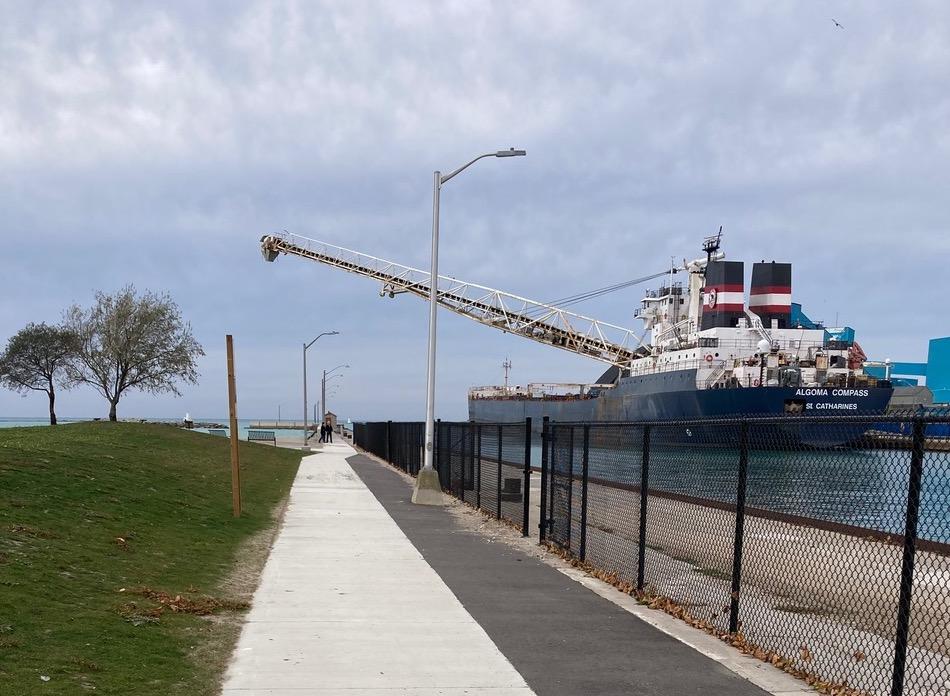
Most days begin at the Port of Goderich with a few folks showing up with their morning coffee on the chance of seeing a ship arrive in or leave the harbour. “Both locals and tourists love being able to see these huge vessels so up close,” says Myles Murdock, who was elected the southwestern Ontario town’s new mayor this past fall.
Located on Lake Huron’s eastern shore at the mouth of the Maitland River, Goderich attracts many waterfront enthusiasts from near and far, but the mayor is clear about it being first and foremost a working town with an industrious port that is set to get bigger and better.
“A lot of people enjoy Goderich as a nice tourist destination, but our port is a pivotal transportation link for several industries,” Murdock emphasizes.
Major port tenants already include Parrish & Heimbecker handling grain crops, Compass Minerals dealing with salt, Da-Lee Dust Control for plant nutrients and magnesium chloride, and the Tomlinson Group involved in distributing aggregates.
The Port of Goderich currently handles approximately six million tonnes in annual cargo. The 260 vessel calls result in the direct employment of almost 800 people, as well as nearly 1,500 indirect jobs. Those numbers are on the rise with the 2.02-hectare (five-acre) expansion 2020 that includes a new dock with accompanying wharf space, and plans for another 4.04-hectare (10-acre) port enlargement.
Out of room!
“We could be doing more business as the demand is there, but we need more space,” says Rowland Howe, the President of the Goderich Port Management Corporation (GPMC). “That’s why we’re seeking funds to help with this $47-million project to further enlarge the port as we originally planned.”
The mayor sees further business as likely emanating from both existing customers, such as Tomlinson to move greater amounts of aggregate, as well as through some diversification, possibly through newly establishing light industry at or near the port.
“Goderich is unique as a town of 7,800 people with all four modes of transportation,” Murdock points out. “There’s the port, rail service, quick access to Highway 8 heading west to Toronto and Highway 4 going south to London, Ontario, and a five-minute drive from the centre of town to the airport.”
Murdock is also keen to make Goderich a ‘fueling station’ and send-off point for greener energy sources, such as hydrogen and ammonia.
Strong economic sense
Being a former Business Education teacher at the Goderich District Collegiate Institute for almost 30 years, Murdock found his first time attending the Hwy H20 Conference in Toronto this past November particularly useful.
“I really appreciated the keen focus on how to further develop already working ports to increase the economic benefits to our communities,” he says. “Seeing what other ports are successfully doing gives us some ideas of what else we might be able to put in place.”
Since the port’s divestment from the federal system in 1999, the GPMC, which is owned by the municipality, has spent approximately $40 million to improve the once neglected facility’s infrastructure.
“It’s always been a busy port, handling primarily salt and grain, but I don’t think the government realized its potential back then,” says Howe.

The Port of Goderich. Photo credit: Rob Boyce.
Key commodities asset
As the manager of the Compass Minerals salt mine operations located at the port back then, Howe was among those concerned about the port continuing to service local industries. “We recognized the water being a huge part of the success of our operations and wanted to make sure that nothing would happen to limit or deny the company’s access to the port’s services,” Howe says.
Having the town assume ownership with a corporation set up for the port’s management appealed to commercial, residential and tourism interests as the best way to balance interests. “Our town also did a full assessment in 2016 and realized the worth of investing in this only deep-water port along Lake Huron’s east shore,” Howe adds.
Business steadily increased. “We reached a point where there was nowhere to lay down materials,” Howe says.
On land, the port was constrained on all sides by existing beaches, marinas and vacation home parks. The only place to possibly expand was in the lake itself and the GPMC came up with a plan to use breakwalls and fill 6.07 hectares (15 acres).
The multimillion-dollar expansion created the new Dock #8 and adjacent wharf in 2020 with the help of funding from the Ontario Ministry of Transportation. These initial five acres were quickly picked up by the Tomlinson Group signing a 10-year lease.
“As a result, we’re bringing aggregates into this port in terms of new business that would not otherwise be available in the region,” Howe says. “So far we’ve had 10 additional vessels call on the port because of this additional space that accommodates between 40,000 and 45,000 tonnes of aggregate.”
Howe says the port is now seeking funds from Canada’s National Trade Corridors Fund and the Government of Ontario to help finance the next stage involving the 6.07 hectares (10 acres) of the original expansion plan.
“Moving things by water as much as possible just makes good sense, especially when we’re looking to reduce our environmental impacts,” Howe says. “So, we hope both the federal and provincial governments see this for the great investment in maritime infrastructure that it is.”
Howe notes that the tenant occupying the recently expanded area already uses less road transport to deliver aggregates from farther north as a result of being able to unload them at the port.

Vessel loading at Compass Minerals in Goderich, Ontario. Photo credit: Rowland Howe.
New possibilities
Other potential opportunities include possibly handling more specialized aggregate deliveries, as well as gypsum for the cement industry. “We might also be able to handle some of the fertilizer required for local farm crops,” Howe says. “We also see great opportunities for handling large cargo as well as materials for new fabrication projects, such as road gradings, once we have this additional space.”
Howe is taking a different approach to diversifying the port’s commodities. “Instead of just reporting historical tonnages, we’re putting more effort into anticipating and attracting new businesses that gives us the rationale for our planned expansion.”
Both he and Murdock acknowledge that a fine balance must be maintained between the required expansion and keeping the waterfront safely accessible to the citizenry and tourists with its popular marina, beach areas, and fishing and kayaking spots.
“We just spent about $2 million on shoring up the waterfront area and rebuilding the boardwalk that were extensively damaged by an October 2019 storm,” Murdock notes. “Our residents know those waterfront enhancements were possible because of the monies earned by our working port.”